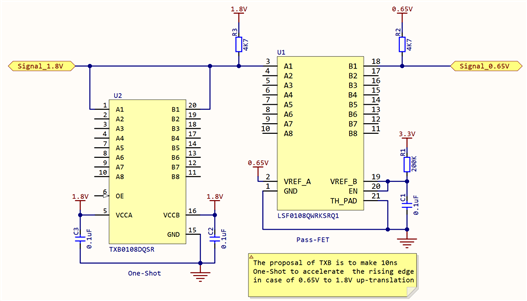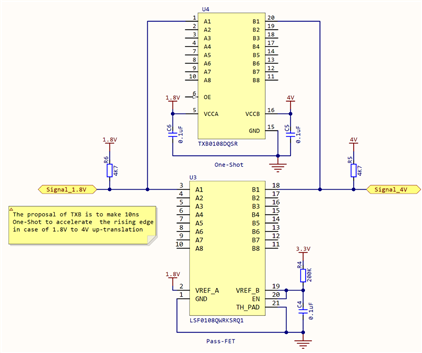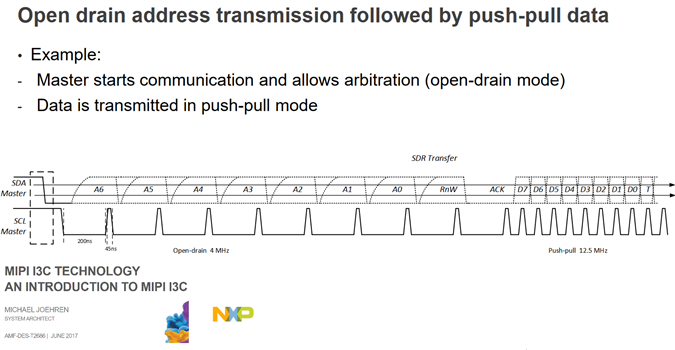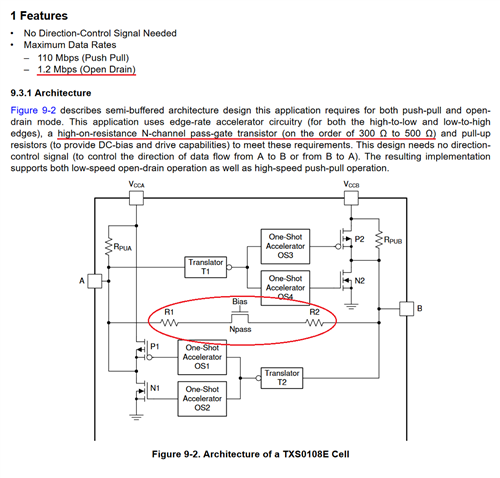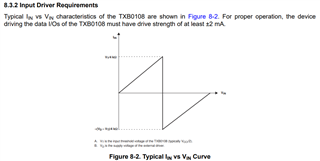Other Parts Discussed in Thread: TXB0108, TXU0304, TXU0104, TXU0204, TXS0108E
Good day,
Is it allowable to combine the level shifters LSF0108 and TXB0108 as shown in 2 attached pictures?
Pict.1 - 0.65V <-> 1.8V translation
Pict.2 - 1.8V <-> 4V translation
(In the pictures only one line is connected to simplify the view)
The proposal of the schematic is to convert voltage level for I3C and SPI interfaces with freq. up to 33 MHz..
TXB0108 is added to LSF0108, because it is expected, that TXB0108 One-Shot function will decrease the rising edge time in case of up-translation.
The idea of the suggested schematic based on the Architecture of a TCA39416 Cell which consists both: Pass-FET (like in LSF0108) and One-Shot (like in TXB0108).


